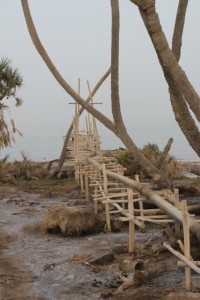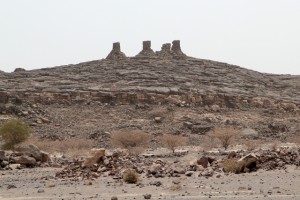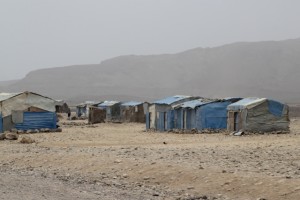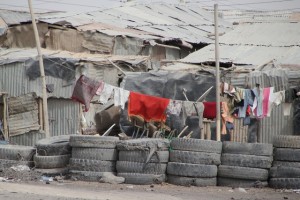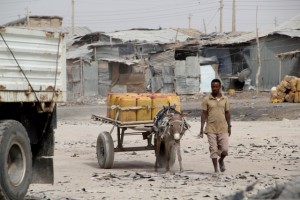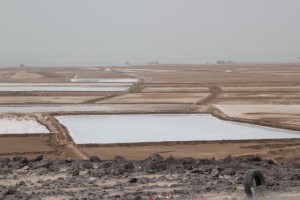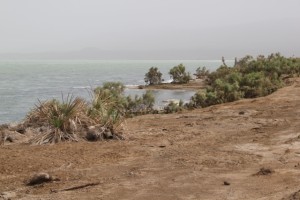A large lake, and associated salt works, and corrugated-iron villages, in the middle of the desert
Where we had expected to enter a set of vague desert tracks into the Danakil Depression, a clearly signposted turn-off from the main Addis Ababa to Djibouti road points to a new tarmac road all the almost 200 km to Afrera. Progress is unstoppable, that’s clear.
Even in this absolutely deserted landscape small hamlets exist, along the road, the standard round huts, sometimes with a base of rocks. In other places the traces of abandoned villages are evident from the round animal pens of basalt blocks that once contained goats or camels. Not everybody survives, and the countryside is dotted with graves. Here they don’t bury the dead, they cover them with rocks, and build a tomb-like structure on top.
There are also two more permanent settlements, aptly called “60” and “140”, after the number of kilometers from the main road. In fact “140”,is only 130 km from the main road, thanks to the new tarmac road taking a shorter route than the old gravel road. I have no idea what these people are doing here, apparently they are involved in the usual Afar activities, herding cattle, camels and goats, and perhaps a little trading, too, but how you keep some 5000 people – allegedly the population of “60” – busy here, it beats me.
The emerald-coloured Lake Afrera is a huge expanse of salt water in the middle of nowhere. Well, except that on the edge of the lake another salt works has developed. With the salt works, a village has developed, too, all corrugated iron and bamboo mats, and satellite dishes. But away from the village is a small camping site on the shores of the lake, under a few palm trees, next to a hot spring. Beautiful!
